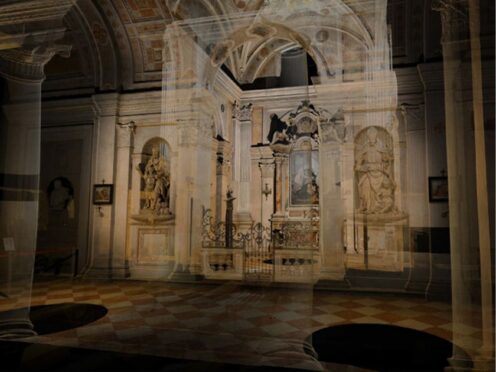Visitors to The National Gallery will be able to see a painting by Italian master Paolo Veronese in its original church setting using virtual reality technology.
The Consecration Of Saint Nicholas was commissioned in 1561 as an altarpiece to hang in San Benedetto al Po in Mantua, and headsets will allow art lovers to see the piece in situ for the first time in more than 200 years.
The altar piece was added after the church was radically remodelled and enlarged in 1539 by Giulio Romano, a pupil of Raphael.

It remained there until the 1820s, when it was removed during the Napoleonic Wars.
Free 20-minute sessions will be available from March and will feature a choice of two virtual guides – curator Dr Rebecca Gill, who will explore the painting and frescoes, or the historical figure of Abbot Asola, who commissioned the painting from Veronese.
The exhibition emerged from a research and development project looking at how The National Gallery can share research with a wider audience by using immersive technologies.

It will be accompanied by a recording of a Gregorian chant, performed by Veneti Cantores, that was performed around the time of the painting’s creation.
Dr Gill said: “Through this project we are able to bring architecture into the gallery and allow our visitors to explore for themselves what it might have been like to stand in front of Veronese’s painting some 500 years ago.”
Lawrence Chiles, head of digital at The National Gallery, said: “Virtual Veronese has enabled us to understand how immersive storytelling can add depth of experience, meaning and emotion to Gallery visitors’ engagement with our paintings.”
Virtual Veronese takes place from March 7 to April 3 2022 at The National Gallery in London.
